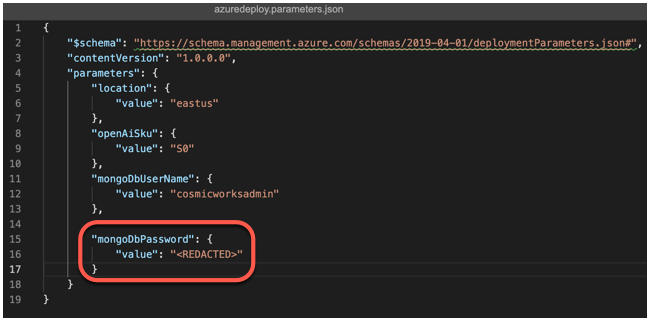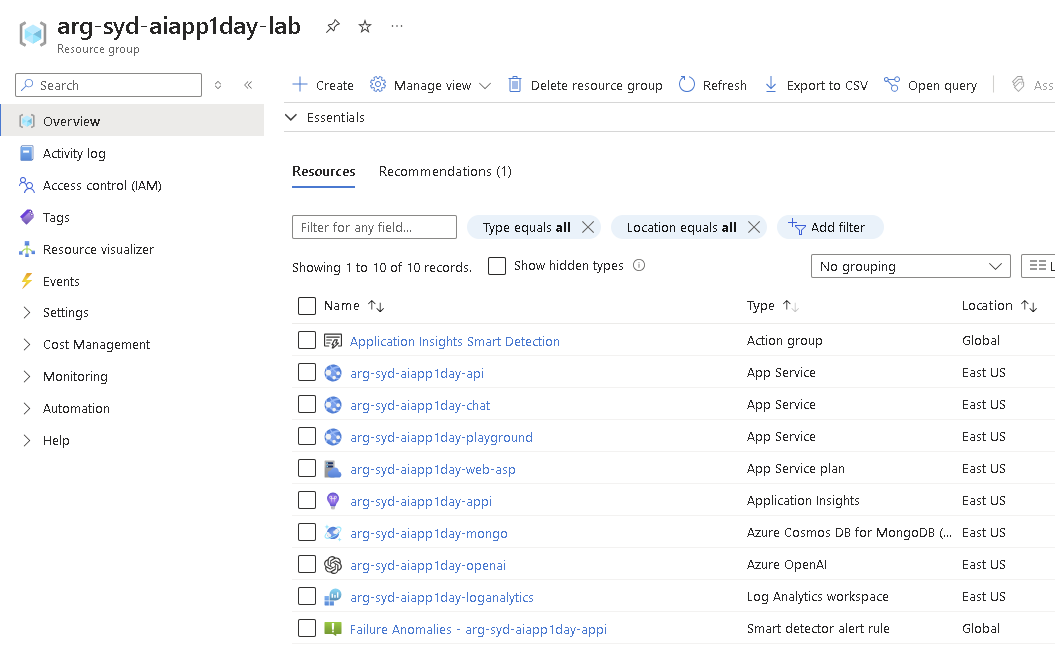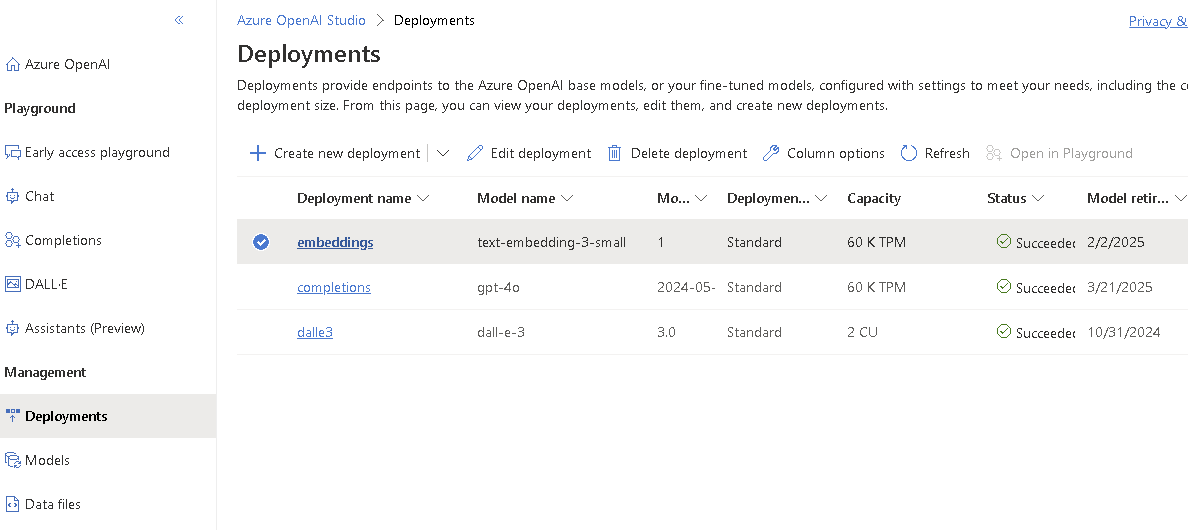Azure Deployment Guide
This Azure Deployment using Bicep step is optional. You can use shared keys and connection string. If you are interested to create all the resources for the labs yourself, please continue the steps on this page. Otherwise, please use Option 1.
The following describes the limitations for chosing an option other than Option 1.
-
Option 2: You have limited Azure Subscription permission within your organisation, you have contributor within an Azure Resource Group and have the ability to deploy
App Service Only. This option is highly dependent on your access and changes can be done to use the shared OpenAI services that have been deployed. It is adviceable to proceed with Option 1 in the interest of time. -
Option 3: If you are Owner or Contributor of an Azure Subscription and have approvals for Azure OpenAI access, this options allows you to deploy
all resources. This step is also founded on the expectation that you are adept with Bicep scripting language in your day-to-day professional activities.
Option 1: Use shared lab resources
Please continue to next lab by clicking the Next button at the bottom of this page.
Option 2: Deploy App Service Only
This deployment will only create 2 web apps for the Chatbot Frontend and Backend.
Run Deployment
Open a terminal and navigate to labs/02-LAB-02/1-Azure-Deployment/lab-user folder within the repository.
-
Login
az login -
Set the desired subscription (Optional). If you have more than one subscription associated with your account, set the desired subscription using the following command:
az account set --subscription <subscription-id> -
Create a resource group, replace {your-rg-name} with the resource group name of your choosing. For example, aiapp1day-daniel-rg. You may have restricted permissions to create a resource group. In the case of restrcited resource group creation access, please skip this step. You will have to find out the name of the resource group and note it down for the next steps.
az group create --name {your-rg-name} --location eastus -
Do a What-If test deployment first
az deployment group create --resource-group {your-rg-name} --template-file ./azuredeploy.bicep --parameters ./azuredeploy.parameters.json --what-if -
Deploy the solution resources using the following command (this will take a few minutes to run):
az deployment group create --resource-group {your-rg-name} --template-file ./azuredeploy.bicep --parameters ./azuredeploy.parameters.json -
Go to
Resource Group'sDeploymentstab to check progress in the Azure Portal.
Option 3: Deploy All Resources
This deployment will create all the resources required for the lab, including Azure OpenAI service, Azure Cosmos DB, and Azure App Services for the Chatbot Frontend and Backend.
Prerequisites
- Azure subscription (Owner or Contributor)
- Azure Cli (Azure Cli includes Bicep)
- Access to Azure OpenAI service
Configure Deployment
Open a terminal and navigate to labs/02-LAB-02/1-Azure-Deployment/lab-core folder within the repository.
Open the azuredeploy.parameters.json file, edit the name (it will be the prefix of all resources). e.g.: arg-syd-daniel
Then edit the mongoDbPassword to a password you wish to use for the MongoDB Admin User. When the Azure Bicep template is deployed, this parameters file will be used to configure the Mongo DB Password and other parameters when provisioning the Azure resources.

Run Deployment
Open a terminal window and log in to Azure using the following command:
-
Login
az login -
Set the desired subscription (Optional). If you have more than one subscription associated with your account, set the desired subscription using the following command:
az account set --subscription <subscription-id> -
Create resource group, replace {your-rg-name} with the resource group name you like, could be aiapp1day-daniel-rg.
az group create --name {your-rg-name} --location eastus -
Do a What-If test deployment first
az deployment group create --resource-group {your-rg-name} --template-file ./azuredeploy.bicep --parameters ./azuredeploy.parameters.json --what-if -
Deploy the solution resources using the following command (this will take a few minutes to run):
az deployment group create --resource-group {your-rg-name} --template-file ./azuredeploy.bicep --parameters ./azuredeploy.parameters.json -
Go to
Resource Group'sDeploymentstab to check progress in the Azure Portal.
Deployed Azure Resources
Azure Resource List

Azure OpenAI Models
